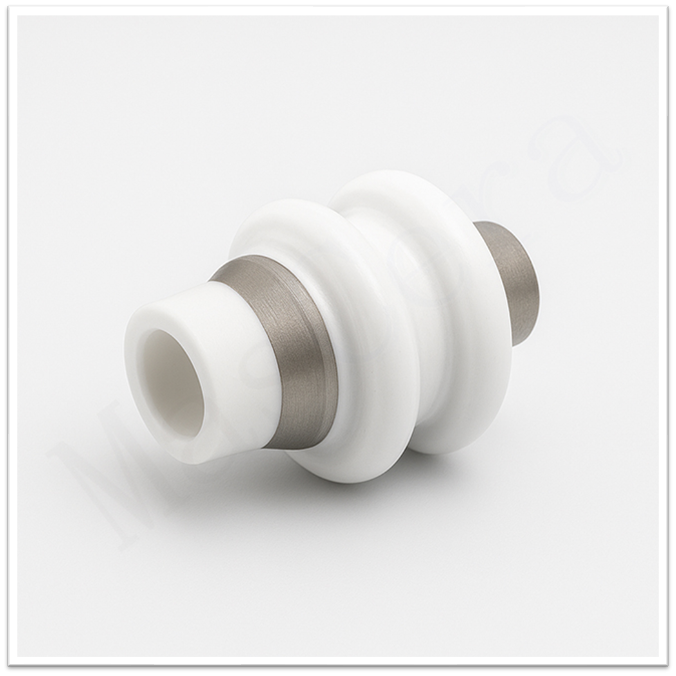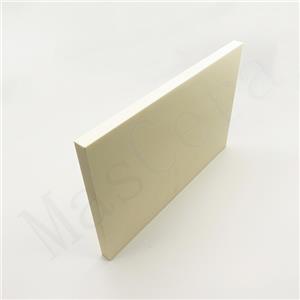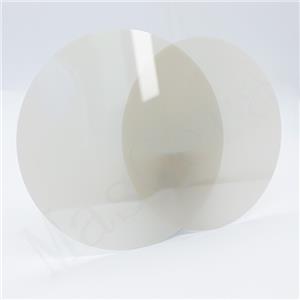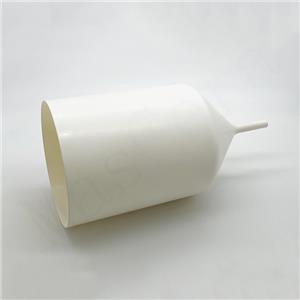What Is Ceramic Metallization with Molybdenum-Manganese?
In modern electronics and high-voltage applications, ceramic materials—especially alumina—are widely used due to their excellent insulation properties, high-temperature resistance, and mechanical strength. However, in certain scenarios, these ceramics must be joined with metal components to enable functional electrical integration. Molybdenum-Manganese Metallization, a form of Ceramic Metallization, is a key enabling technology for this requirement.
What Is Molybdenum-Manganese Metallization?
Molybdenum-Manganese Metallization involves applying a composite layer of molybdenum (Mo) and manganese (Mn) onto the surface of a ceramic substrate, typically alumina. This metalized layer is sintered at high temperatures to form a durable bond. The surface is then usually nickel-plated to allow brazing with metal components.
This metallized layer does not make the ceramic conductive. Instead, it functions as a brazing interface and hermetic sealing layer, allowing reliable metal-to-ceramic integration in extreme conditions—high voltage, high temperature, and high frequency.
Molybdenum provides oxidation resistance and thermal stability, while manganese improves wetting and adhesion to the ceramic surface. Together, they ensure a robust and reliable metal-ceramic interface.
Why Are Metallized Ceramic Components Necessary?
Ceramics are excellent electrical insulators, but they cannot be directly joined to metals using conventional welding or brazing techniques. Ceramic Metallization creates a functional interface between ceramics and metal conductors or housings.
In applications like vacuum interrupters, gas discharge tubes, and high-voltage relays, ceramic housings must both insulate and support electrical pathways. This is achieved through Metallized Ceramic Components that provide:
Key Functions of the Metallized Layer:
Brazing Interface: Enables stable connection to electrodes, flanges, or metal enclosures.
Hermetic Sealing: Maintains vacuum integrity or gas containment over long service life.
Thermal Expansion Matching: Reduces mechanical stress from thermal cycling.
Structural Reinforcement: Enhances mechanical robustness in demanding environments.
Advantages of Molybdenum-Manganese Ceramic Metallization
1. High-Temperature Capability
Withstands sintering temperatures over 1600°C, ideal for high-temperature applications in power systems.
2. Excellent Adhesion and Solderability
Forms a strong bond with alumina; post-plating with nickel allows brazing with common filler metals.
3. Superior Hermeticity
Achieves ultra-low leakage rates (<10⁻⁹ mbar·L/s), essential for vacuum or sealed environments.
4. Functional Segregation of Insulation and Conduction
The ceramic body provides insulation, while the metallized section offers a conductive, solderable surface—ensuring safe and efficient operation.
Applications of Metallized Ceramic Components
1. High-Voltage Electrical Equipment
Metallized ceramic components are used in vacuum interrupters, arc chambers, high-voltage bushings, and gas discharge tubes. In these applications, ceramic metallization enables the combination of insulation and electrical connectivity.
2. Semiconductor and Power Modules
In power electronics, ceramic metallization is applied to substrates and baseplates to facilitate heat dissipation and electrical conduction. Metallized ceramic components provide reliable mounting for high-frequency and high-power devices.
3. Renewable Energy and Rail Transit
Energy converters and traction systems require high-strength insulation. Here, metallized ceramic components serve as durable, sealed housings with stable electrical interfaces created via ceramic metallization.
4. Aerospace and Medical Devices
Medical imaging systems, linear accelerators, and aerospace-grade RF modules rely on ceramic metallization for vacuum sealing and reliability. Metallized ceramic components offer consistent performance in critical environments.
Molybdenum-Manganese Metallization plays a pivotal role in expanding the capabilities of Ceramic Metallization technologies. Especially for Metallized Ceramic Components based on alumina, it provides a functional bridge between insulation and electrical connectivity. This enables safe, high-performance operation in high-voltage, high-frequency, and high-temperature applications. As modern industries demand ever-higher reliability and integration, ceramic metallization remains a foundational technology across electronics, energy, communication, and aerospace sectors.




